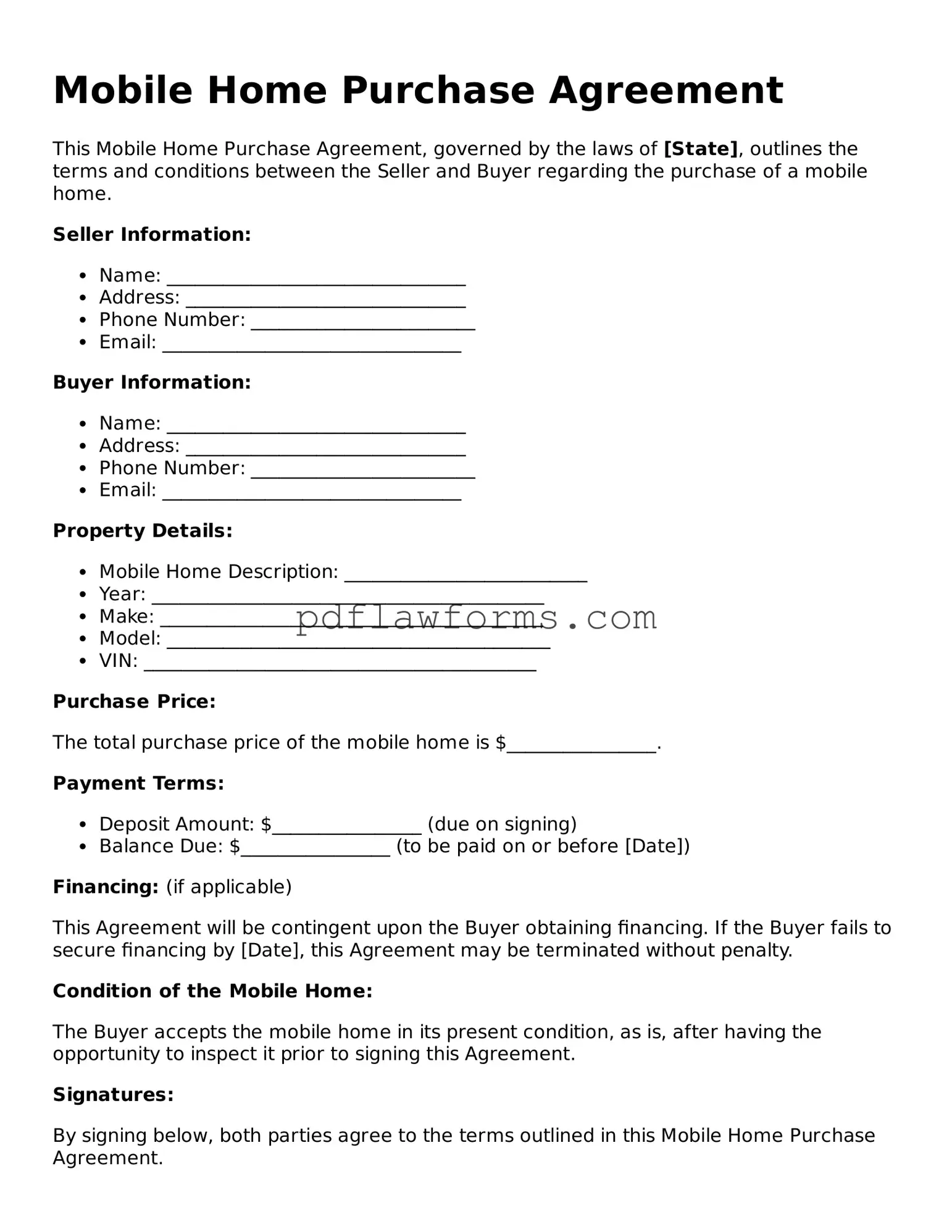When considering the purchase of a mobile home, it is essential to understand the Mobile Home Purchase Agreement form, a key document that outlines the terms and conditions of the sale. This agreement serves as a legally binding contract between the buyer and the seller, detailing critical aspects such as the purchase price, financing terms, and the responsibilities of each party. Additionally, it often includes information about the condition of the mobile home, any warranties or disclosures, and the timeline for closing the sale. By clearly defining these elements, the agreement helps to protect both parties and ensures a smoother transaction process. Understanding the nuances of this form can empower buyers and sellers alike, making it easier to navigate the complexities of mobile home ownership. Whether you are a first-time buyer or an experienced seller, being well-informed about the Mobile Home Purchase Agreement can lead to a more successful and satisfactory experience.
